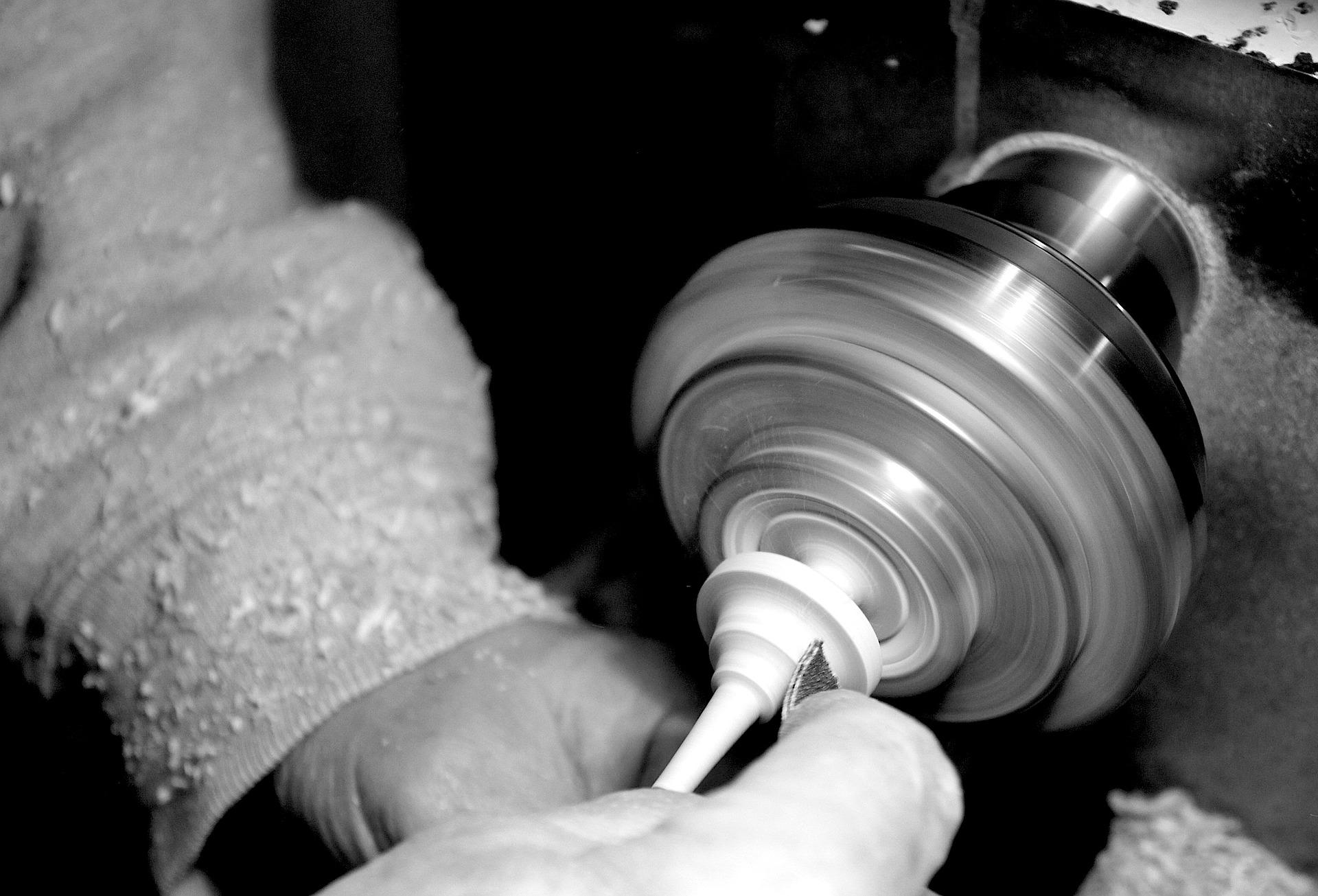Turning The process in which the workpiece is tied to a chuck and rotated against the axis of the machine and with the help of a tool with a linear motion, the excess metal is cut and separated. In this way, the process of separating the waste metal from the job is called Turning Process. Turning is also called lathe in Hindi which means to separate the useless or not in use metal located in the job.
In Turning operation the cutting tool performs only linear motion.
In the turning operation, the waste metal is cut and separated from the job.
Whenever the turning process is done, the workpiece is in motion which makes rotational motion.
To perform the turning operation, a special type of machine is used, which is called a lathe machine. By the way, in general, most of the parts in the engineering industry are spherical, cone-shaped and cylindrical.
The following turning operations can be easily performed on a lathe machine-
1.Taper Turning
2.Profile Turning
3.Facing
4.Boring Turning
5.Knurling
6.Straight or Cylindrical Turning
7.Drilling
8.Threading
1.Taper Turning
This process is considered similar to turning, but in this, instead of running parallel to the cutting axis of the job, the cutting tool is run at a fixed angle, that is, the cutting tool is set at a certain angle. In taper turning, the surface obtained by cutting is not cylindrical but conical in shape.
2.Profile Turning
Profile turning uses a special type of profile cutting tool that is designed to cut a particular profile on the job. Always use this tool perpendicular to the turning axis.
3.Facing
Facing is a process in which the cutting tool is driven perpendicular to the turning axis of the job and the job is turned from one end to the other on a face located at one end.
4.Boring Turning
This is also a type of straight turning process. In this process, a hole is first made in the job with the help of a drill, after that with the help of boring tool, the work of increasing the diameter of this hole is done by turning the hole. The process of increasing the diameter is called internal turning or boring.
5.Knurling
When the surface is roughened to strengthen the job to hold a particular part of the workpiece by hand, this type of process is called nerling. The tool that is used for this process is called a nerling tool. In the grinding process, the surface becomes rough by pressing 1 of the tool perpendicular to the axis and against the surface of the job.
6.Straight or Cylindrical Turning
It is a process whereby the turning axis of the cutting tool job is driven parallel to the axis and the job is rotated against the axis in such a way that the cutting tool continues to cut and make chips.
7.Drilling
Drilling is necessary before carrying out boring operation on a lathe machine. For drilling, the drill is held in the tail stock and then the drill is pressed against the workpiece by rotating it. In addition to the lathe machine, a special type of machine is also used for drilling, which is called a drilling machine. In the drilling machine, the drill is tied into a rotating spindle to a spindle tied into the dam. And the drilling process is done easily by pressing the drill fitted in the rotating spindle against the job.
8.Threading
The outer bangles and the inner part are cut by the lathe machine. For this, first the outer diameter and inner diameter of the bangle are made by straight turning of the job. After that, with the help of gear, a certain speed ratio is established between the spindle and the tool. And then the fixed pitch bangles are cut by setting the fixed pitch.


[…] These are a few tips that can increase the interaction of parents and their educators and ultimately helps in overall student growth in all ways. So next time you find your kid in trouble, don’t forget to connect with their educators.Read More […]